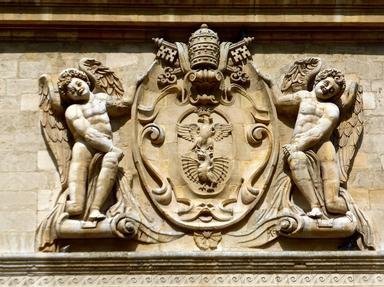Quiz Answer Key and Fun Facts
1. Which of these is NOT a tincture in heraldry?
2. Which of these is NOT a heraldic fur?
3. Which of the following is NOT a position for a lion (or other similar beast) to be represented?
4. Which of the following is NOT a type of cross used in heraldry?
5. In English heraldry, what is the sign of cadence (mark displayed on top of an existing coat of arms) to signify the eldest son?
6. Which of the following is NOT a field division (partition of the background)?
7. Which of the following terms may be used to describe a complex line?
8. You should only put a metallic tincture on top of a coloured tincture.
9. Which of these is significantly different from the others?
10. Which of the following words would you NOT see used to describe a human arm in heraldry?
Source: Author
durry
This quiz was reviewed by FunTrivia editor
bloomsby before going online.
Any errors found in FunTrivia content are routinely corrected through our feedback system.


